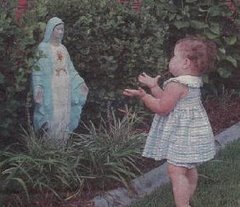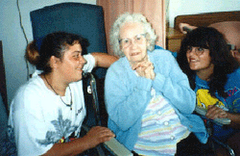The most recent general Council of the Catholic Church, Vatican Council II, is still disputed, especially as to whether a pastoral [as distinct from a doctrinal] council is protected by the Holy Spirit. Most agree Vatican II must be judged simply by Christ’s admonition in Matt 7:16, "By their fruits you will know them. Do you gather grapes from thorns, or figs from thistles?"
Typically, a general Council of the Church is judged by the manner of its convocation, its membership, and its results. Many councils are esteemed by the Church; others have questionable elements, as did the Council of Basle in the 15th century.
It's interesting to see if Vatican Council II had some of the same elements as the mostly forgettable Council of Basle, elements such as conciliarism and dissident Bishops. A time log is important for this analysis.
- 1378-1417: Great Western Schism with rival Popes
- 1414-1418: Council of Constance (the Council that resulted in withdrawal or deposition of the three rival popes)
- 1423-1424: Council of Pavia (later transferred to Sienna)
- 1431-1449: Council of Basle (transferred by the Pope to Ferrara-Florence in 1439 and then to Rome in 1443). Dissident bishops continued to meet at Basle-Lausanne.
The basis for both the Council of Pavia and the Council of Basle was the prior Council of Constance, which promulgated Frequens. Frequens specified an ecumenical council should be held no less than once every ten years to serve as a kind of religious parliament. The Council of Pavia was the first “frequent” council following the Council of Florence. It accomplished very little of note, except to decide that the next council would be held at Basle.
The purposes of the Council of Basle were to reform the Church in its "head and members," to combat heresies, to deal with the Hussite wars, to promote peace among European nations in the face of Islam, and to reunite the Western and Eastern Churches. Even though having excellent goals, the Council of Basle started out badly. Conciliarism was advanced in opposition to the absolute Papal monarchy of previous centuries, especially because conciliarism (bringing Bishops together to decide how to address an issue) had proved so useful in solving the problems of the antipopes of the Great Schism. Were the Bishops now to lead the church in the 15th century?
For example, Session 11 of the Council of Basle in 1433 clearly questioned Papal authority.
If the Roman pontiff or other above-mentioned persons fail to do this, or in any way take means to impede change, prorogue or dissolve the council, and shall not have repented with real satisfaction within four months, thereafter the pope will be automatically suspended from the papal administration and the other persons from the administration of their dignities; the papal administration will devolve by law upon the sacred council. If they persist with hardened hearts under the aforesaid penalties for a further two months after the said four months, then the general council shall proceed against both the Roman pontiff and the above-mentioned persons up to and including the penalty of deprivation.This regrettable wrangling with the Pope led to three articles formulated by the Council of Basle:
- A general council is superior to a pope;
- The pope cannot dissolve such an assembly;
- Whoever denies these is a heretic.
Consequently, there was a serious split in 1439. The dissident Bishops in the Basle-Lausanne group continued to meet for another ten years, but their Council after 1439 is not accepted by the Catholic Church. Many, but not all, Church historians judge that the Council of Basle was a general Council only until the split. The decrees passed during that period are said to be legitimate, if they did not undermine the Apostolic See.
The work of the Council of Basle was transferred by the Pope in 1939 to Ferrara (Council of Ferrara), then Florence, then Rome. Formal agreements were reached with both the Byzantine emperor John VIII and the patriarch of Constantinople Joseph II. However, upon returning home, the Orthodox leaders were not able to win approval from their priests. The fall of the Byzantine Empire to the Ottoman Turks in 1453 prevented any further work toward reunion. The Basle Council also negotiated reunion with the Armenian Church, Nestorian Church, Jacobite Church, and Eastern Rite Churches, but most of these efforts proved unsuccessful in the long term.
By their fruits you will know them.









2 comments:
Dust, you must not have heard. It's springtime. That comes straight from the top.
Despite all evidence to the contrary, it's springtime in our Church. Just ask the average USCCB bureaucrat or chancery office official. They'll tell you.
As for me, I'm not sure the Church could survive another 40 years of "renewal" like the one we've just been thru....
But don't you believe the sky is always blue, Dr. Bombay? We must only be imagining that the sky is dark--and cloudy, too. (Although it does look like there might be a little peek of dawn on the horizon.)
How many times have you heard a manager give a sales pitch on why he is doing a wonderful job? Successful management campaigns always have to be VERIFIED BY NUMBERS.
The trends in the NUMBER of priest vocations, the NUMBER of people who believe in the true presence, the NUMBER of confessions, the number of people foregoing the sacrament of marriage, etc. are NUMBERS that are essential to determining whether the Vatican II campaigns have led to a new springtime in the Church.
Post a Comment